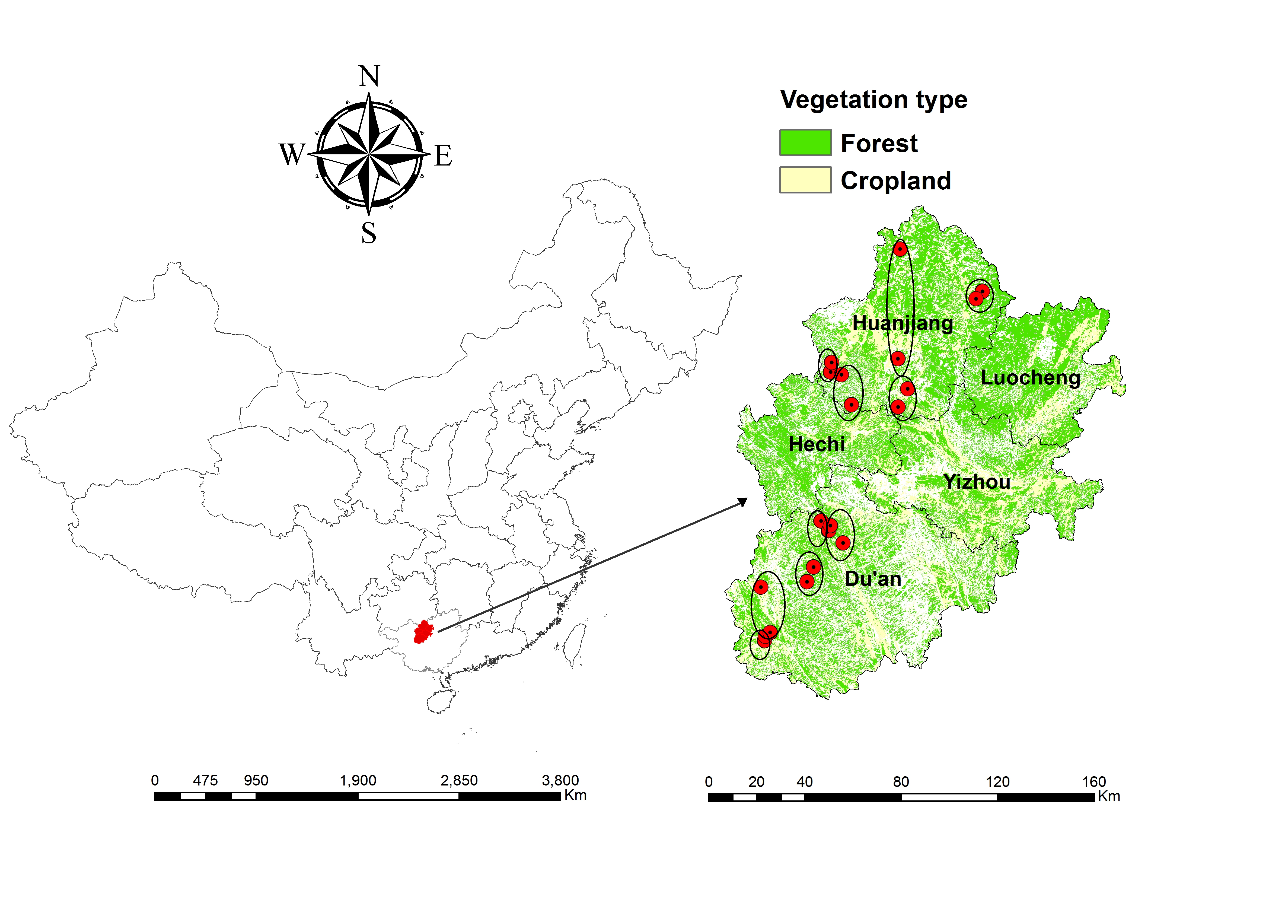
Soil organic matter (SOM) is the largest reservoir of carbon (C) in active exchange with atmospheric carbon dioxide. Global climate was influenced by the change of soil organic C (soil C hereafter) pool. Nevertheless, mechanisms underlying the direction and magnitude of soil C pool variation following afforestation are not well understood.
Afforestation can increase sequestration of atmospheric carbon dioxide and hence attenuate global warming. Although accumulating evidence indicates that lithology is a major regulating factor on soil C level, whether or not lithology controls the direction and magnitude of soil C pool change following afforestation has rarely been reported.
In order to test whether the effects of afforestation on soil C, N and P pools were affected by lithology. A research group of Prof. LI Dejun from the Institute of Subtropical Agriculture, Chinese Academy of Sciences (ISA) used a paired-site approach, measured soil organic C, total nitrogen (N) and total phosphorus (P) pools in surface mineral soil (0–15 cm) in cropland and plantation forest over two lithology types, i.e., limestone and clasolite in a region of southwest China.
The researchers found that lithology modulated the effect of afforestation on soil C or N pool, but not on soil P pool. And soil C pool was not altered by afforestation over limestone, but was significantly increased over clasolite (P < 0.001). "Soil N pool was significantly decreased by afforestation over limestone (P < 0.001), but was not altered over clasolite. Soil P pool was consistently decreased by afforestation regardless of lithology type (P < 0.05)," said Prof. LI Dejun, the first author of the paper.
The team also found that molar ratios among soil C, N and P were not affected by lithology, but were significantly elevated by afforestation (P < 0.01), indicating that soil C sequestration would increasingly be limited by soil N or P following afforestation. They suggest that afforestation effects on soil C and N pools may be controlled by lithology.
This work was supported by the National Key Research and Development Program of China (2016YFC0502404), the National Key Basic Research Program of China (2015CB452703), the Hundred Talent Program of the Chinese Academy of Sciences (Y523101030), the National Natural Science Foundation of China (41571295).
The result provides a new mechanism to explain the divergent responses of soil C and N following afforestation and has been published in the journal of Forest Ecology and Management with the title of “Afforestation effects on soil organic carbon and nitrogen pools modulated by lithology”, (400) 15 September 2017, pages 85- 92. Details could be found at http://www.sciencedirect.com/science/article/pii/S0378112717300099.

Fig. 1. Schematic map showing the sampling sites (Image by LI Dejun)

86-10-68597521 (day)
86-10-68597289 (night)

86-10-68511095 (day)
86-10-68512458 (night)

cas_en@cas.cn

52 Sanlihe Rd., Xicheng District,
Beijing, China (100864)

